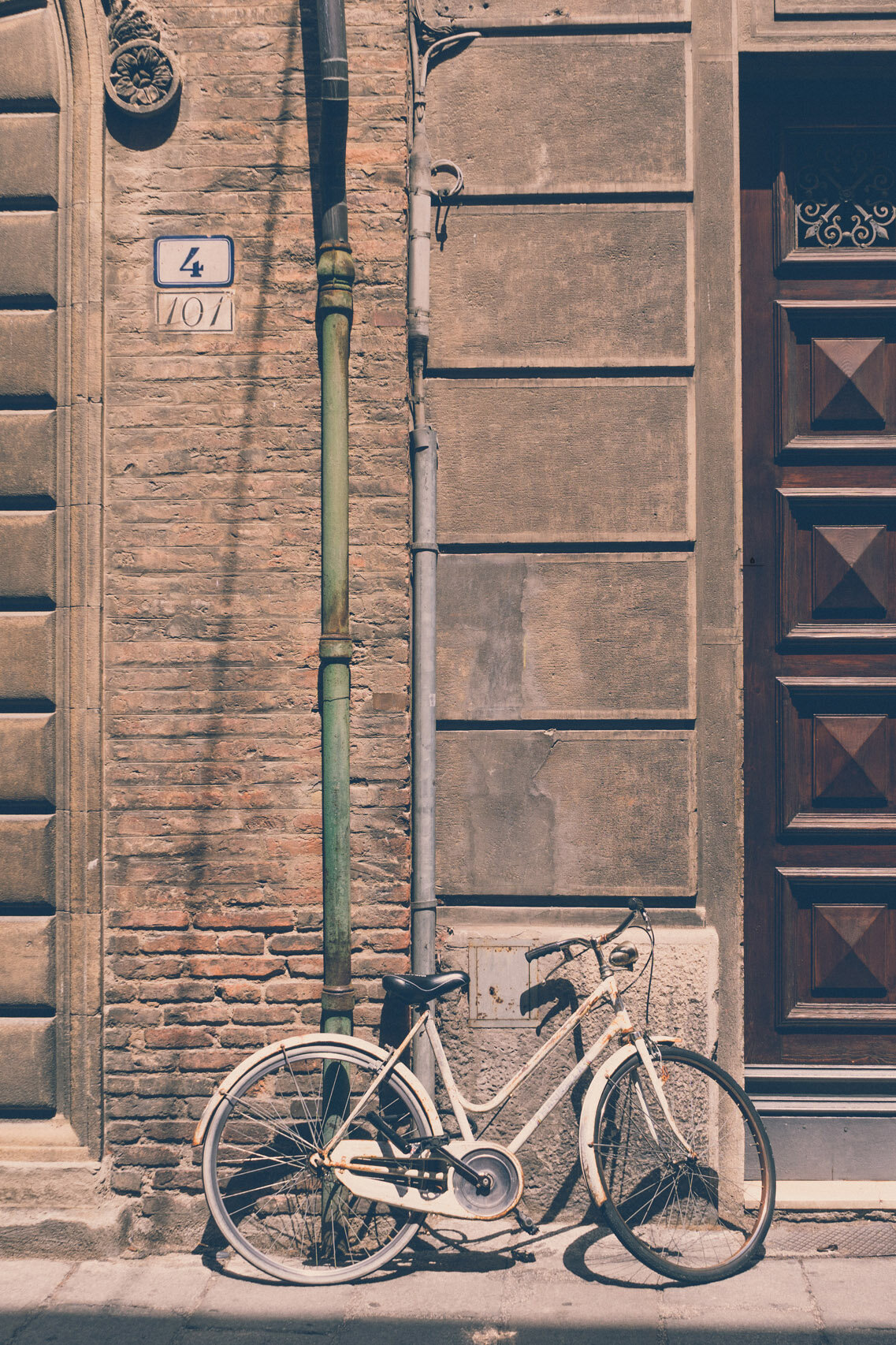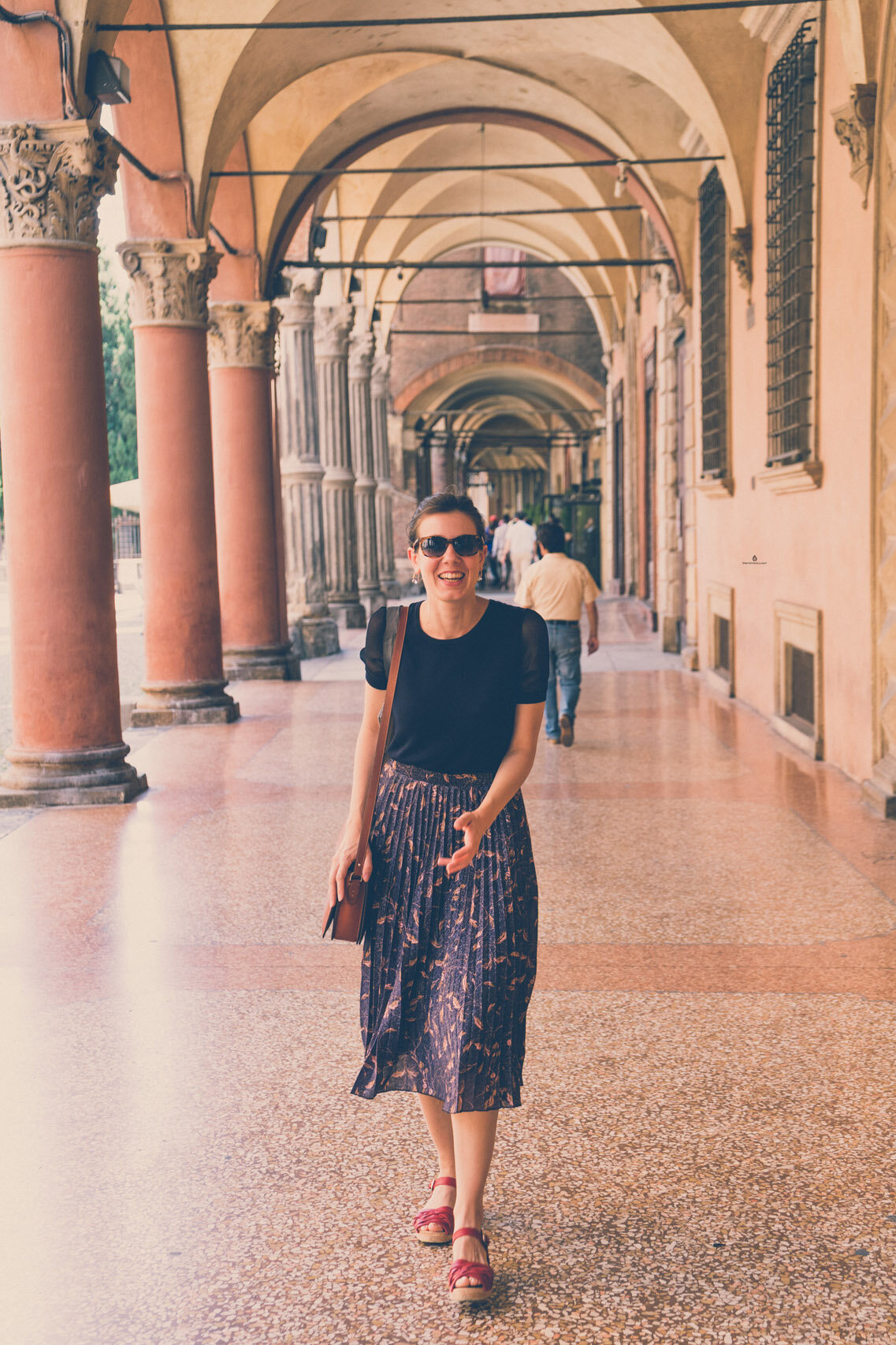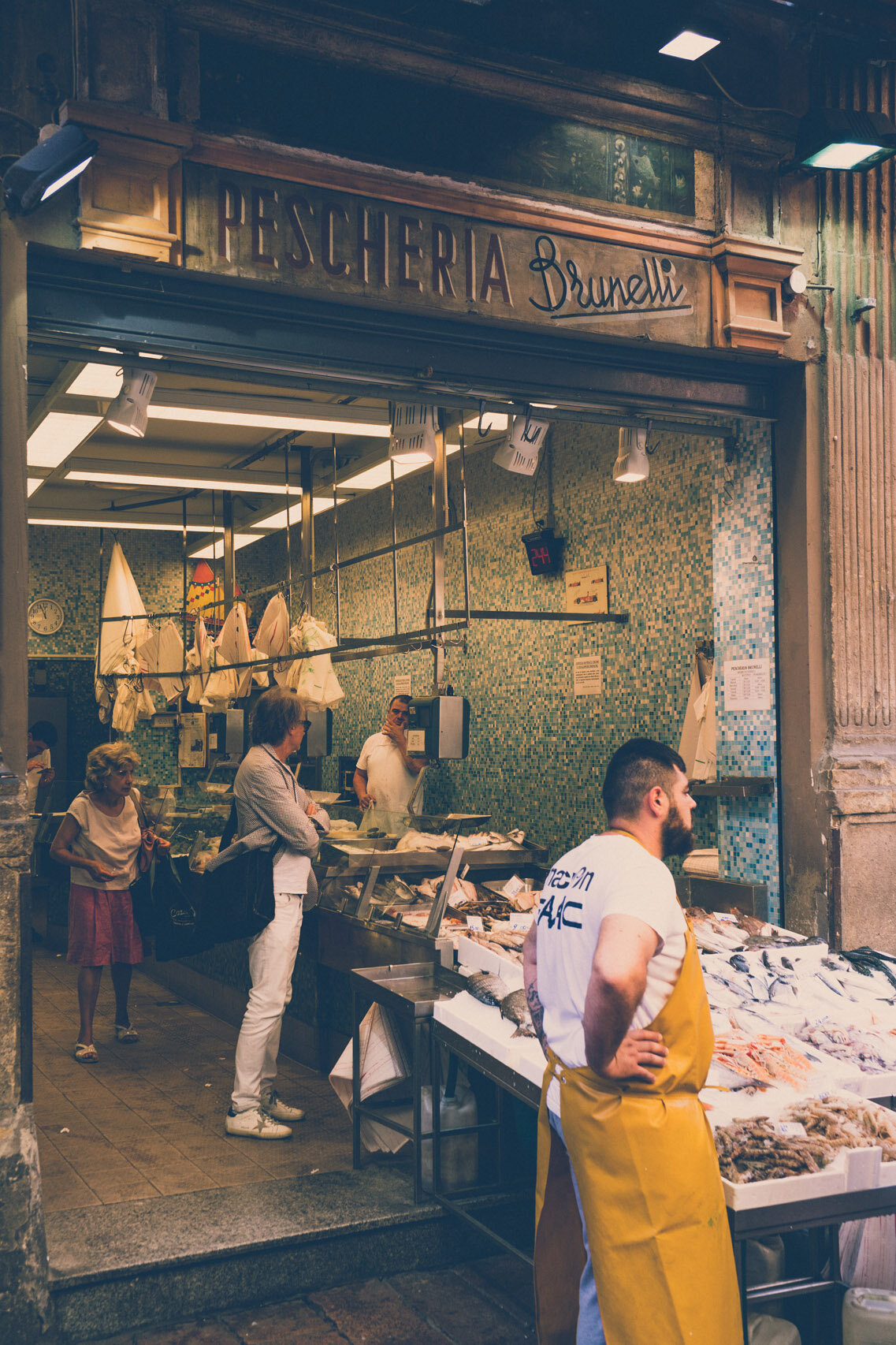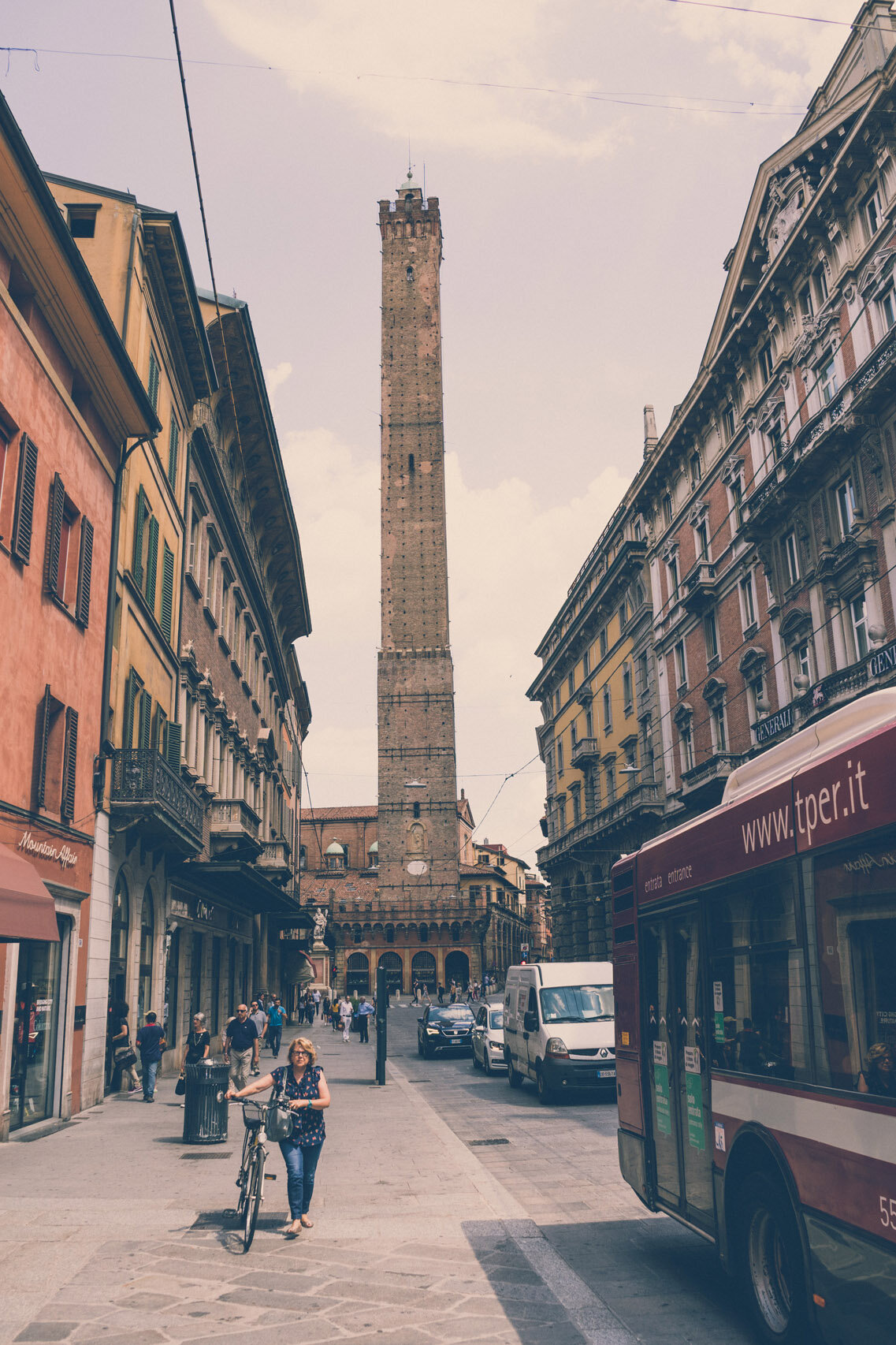Two summers ago, between a couple of days spent in our dear Padova, and a week on our dear Marettimo, we squeezed in a day trip to Bologna, a little more than an hour’s drive from Padova. Such different times than the ones we’re living today! We haven’t traveled for a year, if we don’t count a couple of day trips to Trieste, last of them being in what feels like another life ago- in February. In the meantime, I have been thinking about Italy often and extensively. I’ve never taken our trips to Italy for granted, and without a doubt enjoyed every passeggiata, every aperitivo, every brioche, every beautiful street, every thing I bought as a reminder of that trip. But I know the next time we’ll be able to safely and carefree travel in Italy, I will cherish it even more, I will soak in every detail. Our day in Bologna was not special in any way, we didn’t see or experience, or even eat anything spectacular, and yet it was one of those perfectly joyous days, probably exactly because it was so unplanned, carefree, a bit lazy type of day trip. We simply wanted to take a walk and have lunch, after having seen Giorgio Locatelli and Andrew Graham-Dixon’s episode on Emilia-Romagna.
Bologna is known as the seat of the oldest university in the world (established in 1088), and still as a lively university town; for its red brick buildings, porticos, towers, monumental Basilica di San Petronio; for its leftist spirit, and its cuisine with flag-bearers such as tagliatelle al ragù (the infamous Spaghetti Bolognese), tortellini in broth, mortadella, etc. Those peculiarities got Bologna its three nicknames: “La Dotta” (the learned), “La Rossa” (the red one), and “La Grassa” (the fat one).
We are always and forever primary concerned with the food of the place, so naturally, we started our walk at the Medieval Market, Mercatino di Mezzo, just off the Piazza Maggiore. I find markets where the locals buy their (hopefully) local food, the soul of the city, and an insight into the everyday life of a place. Many Italian towns I’ve been to- such as Padova, Palermo, Florence, Marsala, each have fantastic markets. The central one in Bologna still has a medieval feel to it- the stalls spill over their abundance of fruit and vegetables over a labyrinth of narrow, winding medieval streets, surrounded by tall buildings making the streets shadowy- and that is where dramatic Baroque light takes the scene. We caught a ray of light illuminating a pile of cherry tomatoes, what is more dramatic and Italian than that?
Nearby Basilica di San Petronio was one of the grand projects of the medieval times in Italy, started at almost the same time as Milan cathedral, with similar aspirations to the grandness of the project (intended length of the nave was 182.4 m, with a vast domed area over the transept). It was begun in 1390 and never finished- the nave was completed some 50 meters shorter, the transept and choir were never even started, and only the lower part of the facade was finished. Its interior is, nevertheless, regarded as an elegant example of Italian Gothic, and its facade’s peculiarity lays in a sharp contrast between the lower part elegantly covered in white and pink marble and the rustic, rough red brick upper part.
With or without planning, there is a slim chance one would miss the view of the leaning towers, or Due Torri, as the Bolognese call them. Torre degli Asinelli and Torre della Garisenda were built in the 12th century when the height of the tower served its defensive function as well as a display of wealth of the noble families. From around 100 towers in the middle ages, Bologna is left with around 20, whose height and slenderness dominate the skyline of the old city. We didn’t feel like climbing the 97 meters high Torre degli Asinelli, not even for the views (it was a hot day, and as I mentioned before, it was a lazy day trip), but it is possible (and rewarding, I guess).
We were more interested in lunch, and a short browse on Tripadvisor led us to Osteria Solferino, where we didn’t have the famous tagliatelle al ragù, nor the tortellini in brodo. I had tender beef in a stew, Luka had a fish fillet, and even though it was not the most spectacular Italian food we’ve had, it was reassuringly tasty- we were in Italy, after all. After lunch, we took a walk under the famous Bolognese porticos, such a distinct characteristic of the town that they were the Italian candidate for the UNESCO World Heritage site in 2020. The city has around 40km of porticos, which makes it very pleasant in both rainy and sunny days (it was a welcoming relief on a summer day). Under one of the porticos, the smell of vanilla lured us into a pastry shop, run by a young and passionate owner- with a cute dog behind the counter and simple, fragrant biscuits in the showcase. We chose a little bit of each taste and form and left for Padova.
On our next visit, I would love to see the paintings of Bolognese master Giorgio Morandi in Museo Morandi- known for his simplistic depictions of humble, everyday objects and a toned-down palette. Then, the iconic Paolo Atti&Figli pasta shop, where the fresh pasta is still made by hand, and everything- from the interior to packaging is a time capsule. To reveal something of “La Dotta”, I would love to see the anatomic theater from the 17th century, the birthplace of modern medicine, and the Biblioteca Comunale with around 600.000 volumes- both of them situated in the building of Archiginnasio.
As this post was supposed to be a photo diary, and I had already thrown in some of our experiences and a bit of art and history, I’ll leave you to the warm, red-hued photos, just like Bologna. If you would like to read a guide with actual visitor’s information, then I would recommend an article by my friend Tanmaya, a dedicated traveler.
Talk to you soon,
Anja
*If you would like to support this blog, you can do so by treating me to a cup of coffee on the Ko-fi platform.
Pin this article for later!






















Sunday morning in Lucca. We are taking a morning passeggiata, a walk with no particular goal except looking for everyday life in a foreign place, as we always do. Small Italian towns and villages repeatedly surprise me with their liveliness- it was a rainy morning, but still, the locals were there, active.